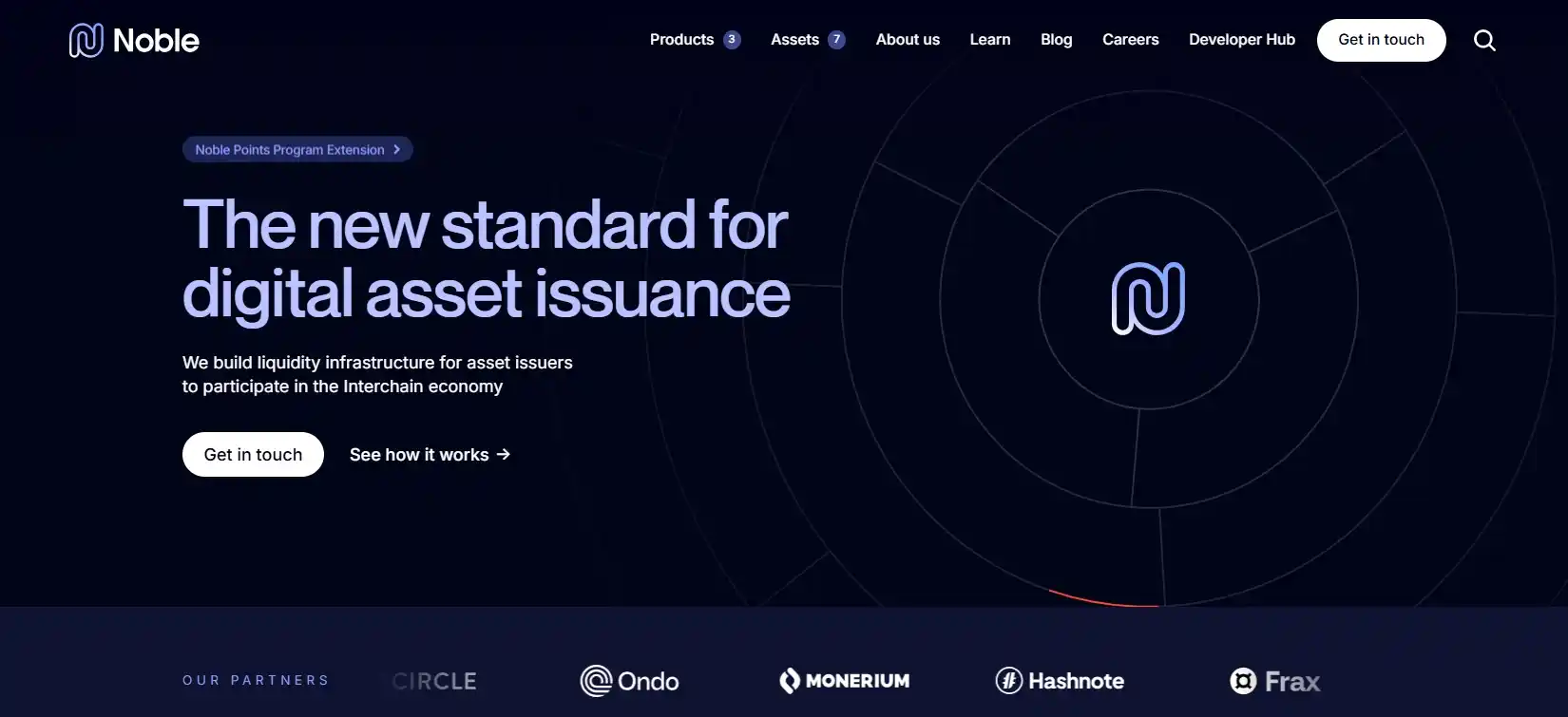With the development of blockchain technologies, more and more traditional assets are transitioning into digital format. Noble is an innovative project that offers a universal solution for tokenizing various assets, from real estate to securities. The platform combines the advantages of decentralized finance (DeFi) and smart contract security, ensuring transparency and operational efficiency. Noble enables users to issue, manage, and exchange digital assets with minimal costs. Thanks to its open architecture and compatibility with other blockchains, the project is becoming a key component of the Web3 ecosystem.
Contents:
- What is Noble and how does it work?
- Technological foundation of the platform
- Asset tokenization: opportunities and advantages
- Ecosystem and partnerships
- Project prospects and development
- Conclusion
What is Noble and how does it work?
Noble is a decentralized blockchain platform created for tokenizing real assets and managing digital valuables. The project eliminates the need for traditional intermediaries by offering a transparent and efficient way to convert physical assets into digital tokens. The platform's foundation is its proprietary blockchain with optimized architecture that ensures high transaction processing speed and low fees.
Users can issue tokens representing shares in various assets - from real estate to financial instruments - and then trade them both within the ecosystem and on external platforms. Thanks to cross-chain interoperability, Noble easily integrates with other blockchain networks, expanding opportunities for investors and developers. Key platform features include modular structure, flexible smart contracts, and scalability, making it a universal solution for asset digitalization.
Technological foundation of the platform
At its core, Noble utilizes a high-performance blockchain specifically designed for digital assets. To achieve maximum efficiency, it employs a hybrid consensus mechanism combining elements of Proof-of-Stake (PoS) and Byzantine Fault Tolerance (BFT). This ensures fast transaction processing and resistance to attacks.
Smart contracts are a crucial component of the platform, automating token issuance and exchange processes. They support various standards including ERC-20 and ERC-721, facilitating integration with Ethereum and other networks. Additionally, Noble provides developer tools including API and SDK to expand the ecosystem.
Comparison of Noble with other platforms:
| Criterion | Noble | Ethereum | Polkadot |
|---|---|---|---|
| Speed (TPS) | 5000+ | 15-30 | 1000+ |
| Fees | Low | High | Medium |
| Asset support | Any | Tokens | Tokens |
As evident from the table, Noble demonstrates significant advantages in transaction processing speed compared to Ethereum, while maintaining low fees. This makes the platform particularly attractive for mass asset tokenization where both scalability and cost efficiency matter. Moreover, support for any asset type, unlike competitors' limited capabilities, opens fundamentally new horizons for digitalization.
Asset tokenization: opportunities and advantages
One of Noble's primary functions is converting real assets into digital tokens. This process creates new opportunities for investors by enabling fractional ownership of large assets and global trading. For instance, real estate or artworks become accessible to a broader audience.
Advantages of tokenization on Noble:
- Liquidity - digital assets can be quickly sold or exchanged.
- Transparency - all operations are recorded on blockchain, preventing manipulation.
- Accessibility - lower minimum investment thresholds.
Additionally, the platform supports legal token compliance, ensuring regulatory requirements are met. This is particularly important for institutional participants like investment funds and banks.
Ecosystem and partnerships
Noble actively develops its ecosystem through collaborations with leading players in blockchain and traditional finance. Partners include crypto exchanges, DeFi platforms, and legal firms that help integrate digital assets into the global economy.
Regulatory engagement is a key focus area. Noble aims to establish a legal framework for tokenization to facilitate mass adoption. The platform already supports KYC and AML standards, ensuring user security.
Project prospects and development
Noble is actively evolving to become a leader in asset tokenization. Current efforts focus on three areas: integration with traditional financial institutions, platform scalability improvements, and expanding supported asset types. Special attention is given to building bridges between DeFi and classical investment instruments.
Developers are enhancing the blockchain architecture to ensure high throughput while maintaining low fees. Simultaneously, they're attracting new partners from various economic sectors. These steps aim to transform Noble into a universal digital asset platform with extensive capabilities for investors and issuers.
Conclusion
Noble represents a promising solution for asset tokenization, combining cutting-edge technology with user-friendly design. The platform breaks down barriers between traditional finance and the digital world, offering innovative value management approaches.
With ecosystem growth and expanding partnerships, Noble could become a key blockchain industry player. The project creates new opportunities for investors and businesses, facilitating the transition to a decentralized economy. In coming years, expect further functionality expansion and increased platform adoption.






